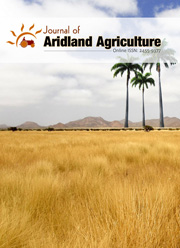Assessment phenotypic diversity of rice (Oryza sativa L.) genotypes by multivariate analysis
DOI:
https://doi.org/10.25081/jaa.2021.v7.6516Keywords:
Rice (Oryza sativa L.), Agronomic traits, Multivariate analysis, Phenotypic diversityAbstract
An efficient way to achieve superior productivity is to determine the genetic variation of the various rice genotypes. This research was aimed at estimating potential variations between rice genotypes and identifying each trait contribution in total variation and classifying superior genotypes. The experiment was performed at the Rice Research and Training Centre, Sakha, Kafr El-Sheik, Egypt. Twenty-two genotypes of rice were analyzed using seven agronomic traits. Multivariate approaches were utilized including principal components and cluster analysis. Results showed that PC1 and PC2 represented 66.1% of the variation between studied genotypes, mainly 48% because of grain yield per plant variation in PC1 followed by the characteristics of its components i.e., number of panicles per plant, number of filled grains per panicle, and 1000-grain weight. The three Egyptian rice genotypes Giza 181, Giza 178, and Giza 177 were the best genotypes for grain yield. Cluster results revealed that the majority of genotypes originated from one source (except for Indian variety IET1444) or belonged to one classification were clustered together. Multivariate analytical approaches are ideal instruments for providing information on agronomic character variations. Consequently, the results of the current study should be taken into account when developing new rice varieties.




 .
.